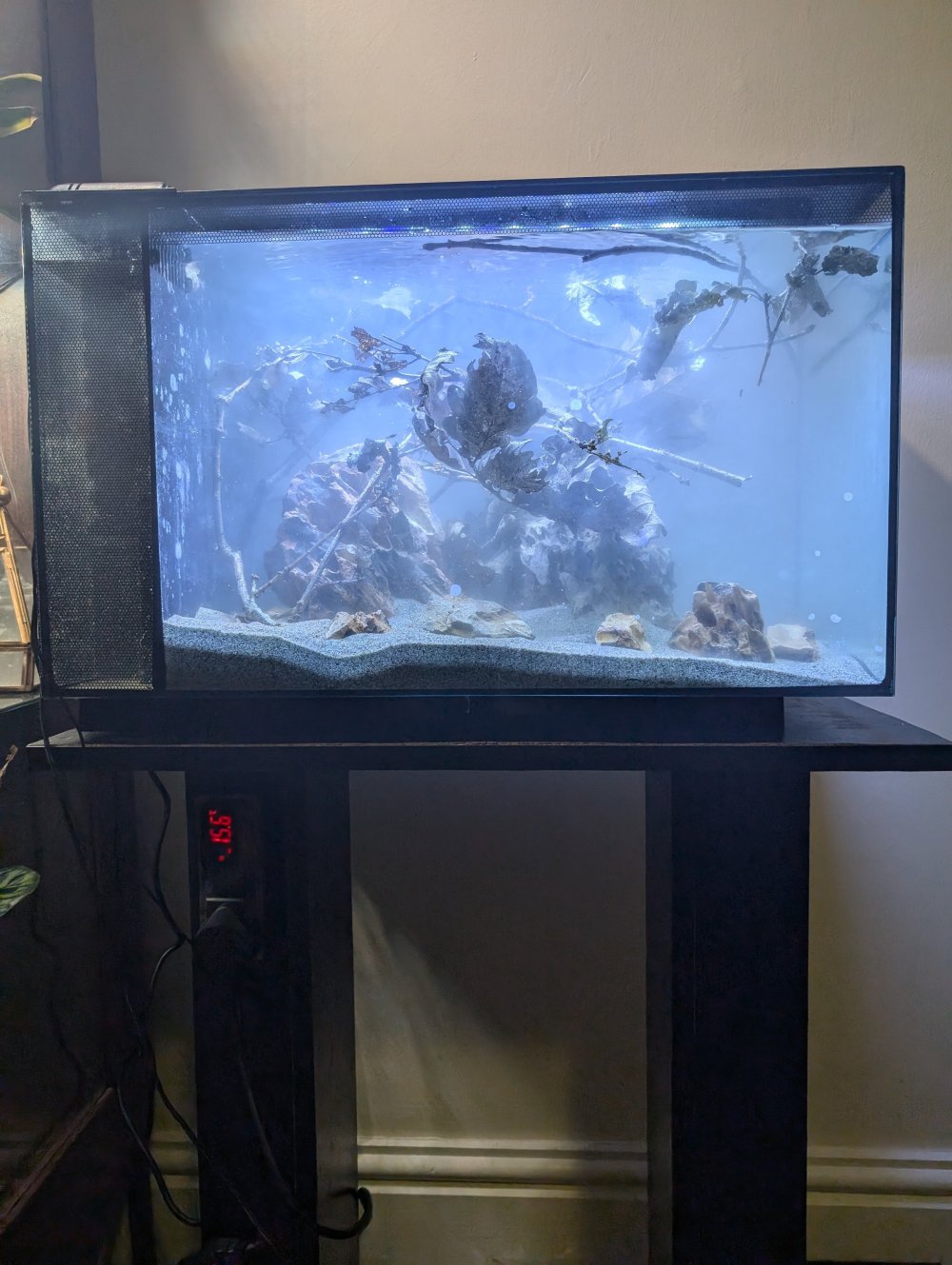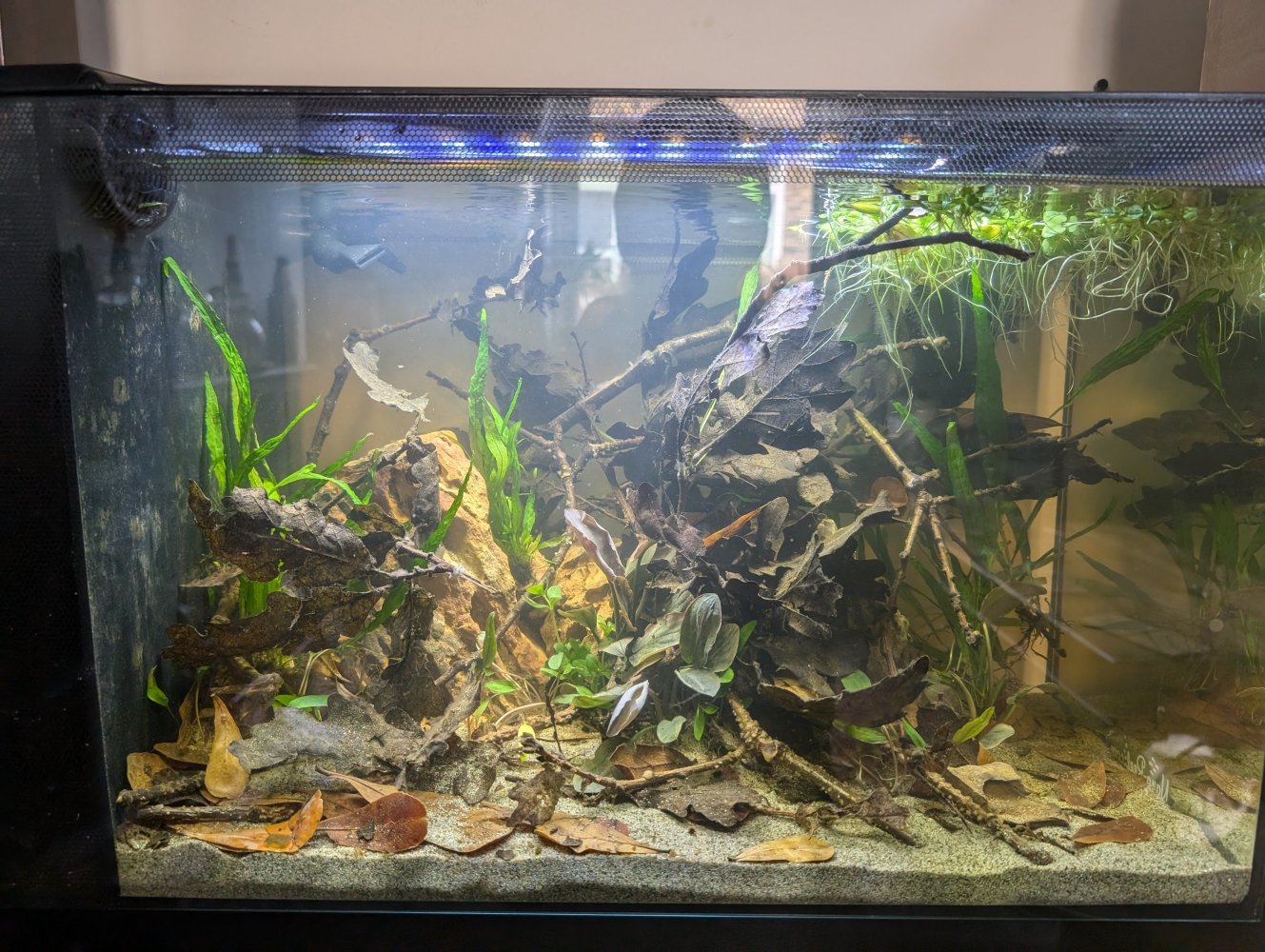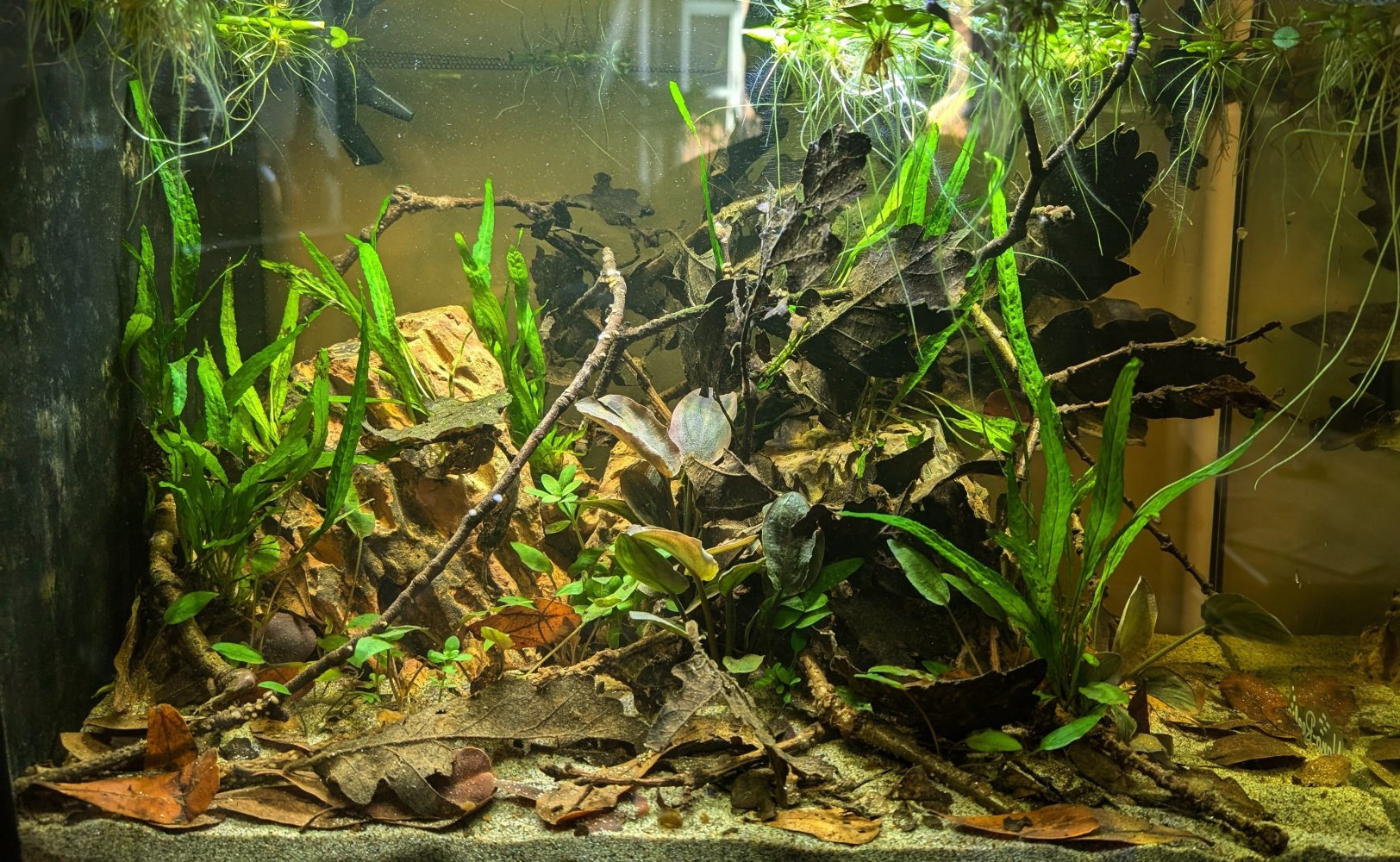Ratvan
Member
So this little slice of swamp was set up 18/09/2024 and I am currently cycling by dosing Ammonia up to 4ppm each day and testing until the tank can process this.
Hardware
Tank: Fluval Evo Tank (L60cm x W30cm x H30cm)
Light: Stock LED Lighting on Nicrew Digital Controller
Heater: 100w Mini Aquarium Heater on Nicrew Temperature Probe
Filtration: 250LPH Submersible Pump
Stand: Ciano 60 Stand
Hardscape: 5KG Dragon Stone
Substrate: 10KG River Sand and various Botanicals
Over the past few weeks I have been playing with the layout of the Hardscape as well as some of the plants that I have later purchased and included within the tank
Initial Set Up

up until now


I am hoping that once my cycle is complete that this will become the home of a pair of Wild Betta, most likely from the Coccina Complex, very interested in the Api Api as well as the Persephone
Plant List is currently
Cryptocoryne Petchii
Hygrophila Polysperma
Lagenandra Meeboldii
Limnobium Laevigatum
Microsorum Pteropus Narrow
Hardware
Tank: Fluval Evo Tank (L60cm x W30cm x H30cm)
Light: Stock LED Lighting on Nicrew Digital Controller
Heater: 100w Mini Aquarium Heater on Nicrew Temperature Probe
Filtration: 250LPH Submersible Pump
Stand: Ciano 60 Stand
Hardscape: 5KG Dragon Stone
Substrate: 10KG River Sand and various Botanicals
Over the past few weeks I have been playing with the layout of the Hardscape as well as some of the plants that I have later purchased and included within the tank
Initial Set Up

up until now


I am hoping that once my cycle is complete that this will become the home of a pair of Wild Betta, most likely from the Coccina Complex, very interested in the Api Api as well as the Persephone
Plant List is currently
Cryptocoryne Petchii
Hygrophila Polysperma
Lagenandra Meeboldii
Limnobium Laevigatum
Microsorum Pteropus Narrow




